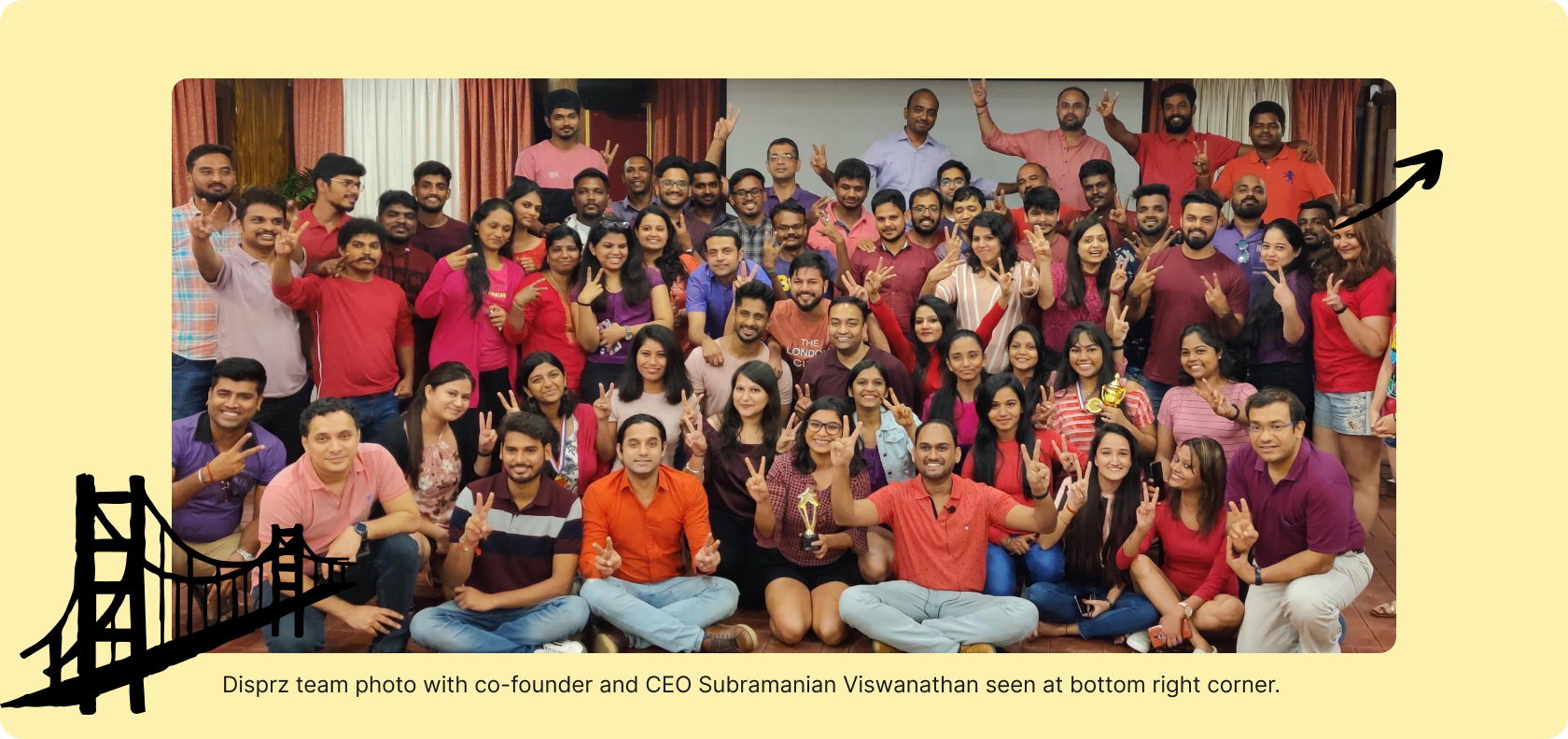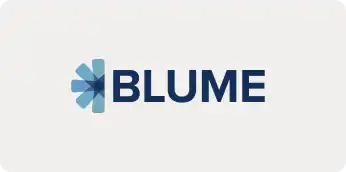Disprz raised a bridge round of funding in January this year to go to the next level of scaling its AI-powered learning management and upskilling platform for enterprises. This will bring new challenges in hiring and internationalization. But for CEO and co-founder Subramanian Viswanathan, the inflection point for hiring came between 2019 and 2020, when the eight-year-old startup went from around $1.5 million to $2.5m ARR. It has been doubling its revenue since then, buoyed by a $13 million series B funding round in late 2021, to cross $10m ARR last year.
It was in the 2019-2020 phase, when the startup crossed $2m ARR, that Viswanathan began to feel an acute need for new functional heads and an organizational structure. A lot of playbooks are written on the early stages of a startup, from fundraising to finding product-market fit (PMF). But the path gets hazier after that. Viswanathan had to find answers to new questions that arose.
Now, in our Founder’s Playbook series, he tells SaaSBOOMi what changed beyond $2m ARR for Disprz and how he coped with change by making eight key hires.
1. Head of enterprise implementation avoids clusterfug
As Disprz grew, it began to sign on larger enterprise customers. Some, like Amazon, had 100,000+ employees. And every employee is a user of the learning platform.
The sheer size of these accounts made it imperative to focus on how the platform is deployed, which is different from working with SMBs where you might get by with a one-size-fits-all approach. With a large enterprise customer, taking your eye off implementation can set you up for a clusterfug.
“You can build a very repeatable sales engine, but if your implementations fail, it counts for nothing. So I would urge companies to hire a head of enterprise implementation around the $3-4 million mark. And separate implementation from customer success,” says Viswanathan. “As soon as a sale is closed, implementation should take over and then hand it over to customer success.”
2. Head of customer success is a managerial function
Customers being very demanding is a given in enterprise SaaS. They demand attention, customization, new solutions, et al. “Every customer stretches your roadmap in different directions.”
Customer success thus becomes critical. From the very outset, enterprise SaaS requires a strong customer success function with clearly defined roles as to how much revenue and how many accounts a customer success manager (CSM) can support. And, as the company scales, coordinating and managing the CSMs requires a suitable leader.
“You can train people to become CSMs, but it’s harder to find someone who can manage a team of CSMs. That’s a different skillset,” says Viswanathan. “Early on we hired a VP of customer success, but down the road, we realized it was so important that my co-founder actually doubled up to play the role.”
3. Founder’s office director for strategic initiatives
Scaling a product that has got a foothold in the market can become all-consuming. So, in the $2-3m ARR range, Viswanathan decided to set up a “founder’s office” to ensure new strategic initiatives got as much attention as everyday functions.
“Everybody was neck-deep in implementation. The sales team was busy selling. The product team was busy building. So we needed a founder’s office to execute strategic projects, be it codifying data across the company, designing and implementing playbooks, or going to new markets,” he recalls.
Viswanathan himself went to the Indian School of Business (ISB) and the people he hired for the founder’s office were from top-tier business schools. He also had to look outside the organization for the founder’s office director. “Our functional heads did not have the expertise, because a lot of the initiatives are cross-functional. Somebody with a business school background who can appreciate different aspects of a business is better equipped for that role.”
The founder’s office freed up bandwidth for the founders and also created new functions. For example, the RevOps function in Disprz, to optimize revenue generation by collaborating across teams, began as an initiative in the founder’s office. The person who led that project later became the head of RevOps.
4. You need multiple products and a director
It’s easy to fall in love with a product that hits the market and watch it grow. But, as Marshall Goldsmith famously put it, “What got you here won’t get you there.”
So you need to keep innovating and building new products to avoid becoming stale. Disprz now has multiple products and solutions.
Viswanathan himself has been managing the zero to one journey for a new product, which aligns with his passion. Beyond the stage of product innovation, it goes to developers and product managers.
The ideal number varies from one context to another. In the case of Disprz, Viswanathan felt every group of five developers needed a product manager. And once the number of product managers crossed five, he needed a director of products. In the next cycle of growth, with multiple product directors, a VP of products may be needed.
And again, while a product manager may work well with designers, developers, and engineers to spike functionality, Viswanathan feels the director of product managers requires a different skillset, preferably with a business school background.
5. A head in the cloud
A new requirement that’s emerged on the product side is cloud infrastructure management.
“It has become such a complex topic,” says Viswanathan. “Things like application performance monitoring, information security, cloud cost optimization – managing all of this is a full-time job. So I would start separating out architecture functions from the cloud infrastructure function. I would hire someone or get one of the senior engineering leaders to do this. Once you hit a scale of $4-5 million, you need a dedicated head of cloud infrastructure.
6. Crossing the Dunbar number brings HR head
British anthropologist Robert Dunbar studied how big a group could get before it began to splinter, and his magic number was 150. This has proved remarkably consistent in subsequent research applied to modern societies. In the case of a SaaS company, the Dunbar number is the point beyond which you’re no longer a family where everybody knows everybody directly.
Disprz started an HR function when it reached an employee count of 50 and hired an HR head at 175. Once the CEO no longer has one-on-one relationships with everyone in the company, they have to be managed professionally to avert discontent and discord.
7. Get someone who loves to do what most people hate
The popular view of startup culture is to break the rules and think of drawing a line afterward. But this got more complicated as technological compliance became a big issue.
“The whole gamut of ISO 27001, SOC 2, GDPR … Compliance has become a topic by itself, but most people hate to do it,” says Viswanathan. “We were lucky to have somebody for whom that was a passion. Thanks to that person, we are now ISO 27001, GDPR, and SOC 2 compliant. And for enterprise SaaS, that has become table stakes.”
8. Keep investors happy with a corp dev VP
Fundraising is something the founders typically do themselves at the early stages of a startup. But once it raises a series B round and scales beyond $6-7m ARR, this gets too hard to manage.
“After our series B round, we had one seed institutional investor, one series A institutional investor, and two institutional investors for series B. And the founders could no longer manage board meetings and investor relations well,” says Viswanathan. “So I would strongly urge hiring a VP of corp dev who can manage the current investors – which means creating data for the board meetings and updating them on a periodic basis – as well as prospect for new investors.”
“We are actually in the middle of our series C process. The level of data that the investor today demands, and the level of diligence checks we go through, the founders cannot manage. So the corp dev head can actually do that. And again, that frees you up quite a lot as a founder and CEO.”

Step back and empower
Viswanathan’s entrepreneurial journey goes way back to 2004 when he built an ERP product for SMEs. He spurned an admission to Stanford University to bootstrap the SaaS startup with his industrialist father. But it was hard to sell a software product in the Indian market rife with piracy those days. After two years of struggle, he took up studies at ISB. His startup folded but the product still had customers, and he managed to use his business school network to sell it to an IT services company for $1 million.
He worked at McKinsey for a few years after ISB before launching his second startup around 2010. It made software to help teachers use tablets in classrooms. Apple had launched the iPad that year and the Indian government promoted an initiative to digitize classroom education for the masses with low-cost tablets. The failure of this project spelled doom for Viswanathan’s startup.
“They went for cost innovation too soon instead of letting the premium segment become early adopters. The tablet wave died and schools went back to using physical textbooks. It’s the biggest technological miss of the decade, as I see it,” says Viswanathan.
Burnt twice, he made a success of his third venture to manage enterprise learning and upskilling, scaling it to $10m+ ARR. But at heart, Viswanathan remains a product guy with a passion for ideation and innovation.
“What I enjoy doing is product,” he acknowledges. “But, at a particular scale, as a CEO, you can’t enjoy doing one thing. You need broad oversight of everything. So I’m at a stage where I’m doing less and less of what I enjoy. I’m learning to manage a team of leaders as opposed to doing anything myself.”
Thus the hiring of leaders for various new functions as Disprz scaled up segues with Viswanathan holding up a mirror to his own role. “I just need to let go. Step back and empower. I’m still a work in progress as far as this is concerned, but it’s important,” he says.
“If your reportees create something of their own, they have 100% ownership. It’s better that they create something that is 70% perfect according to you, but that has 100% ownership, as opposed to creating something that’s 100% perfect but has 50% ownership.”


























